The Real Reason Your Spring Lawn Looks Bad (And How to Fix It This Fall)
I’ve been in the green industry for a long, long time, and if there’s one secret I wish every homeowner knew, it’s this: a gorgeous spring lawn is born in the fall. It’s so common to see people breathe a sigh of relief, pack away the mower at the first sign of a chill, and call it a year. But honestly, those are often the same folks who are stumped in April, wondering why their yard is a patchy, weedy mess.
In this article
- First, What’s Actually Happening to Your Grass?
- The Final Mows: Finding the Sweet Spot
- Leaf Duty: Why a Clean Lawn is a Healthy Lawn
- Letting it Breathe: The Truth About Aeration
- The Last Meal: Picking the Right Winter Fertilizer
- Fixing Bare Spots: The Fall Seeding Advantage
- Your Simple Fall Lawn Checklist
- Inspirational Gallery
The work you do between the first leaf drop and the first hard frost is, without a doubt, the most important lawn care of the entire year. It’s what decides if your grass heads into winter strong and protected, or weak and vulnerable to whatever the cold throws at it.
Think of your lawn like it’s going into a deep, restorative sleep for the winter, not just dying off. Below the surface, the roots are still wide awake and working hard. They’re busy storing up nutrients and carbs to survive the freeze and fuel a huge growth spurt in the spring. Our job isn’t to fight that process—it’s to give it everything it needs. This is the playbook for helping your lawn endure the harshness of winter and come out looking incredible.

First, What’s Actually Happening to Your Grass?
Before you even think about touching a tool, it helps to know what’s going on under your feet. As the days get shorter and the air gets colder, cool-season grasses—think Fescues, Kentucky Bluegrass, and Ryegrass—totally shift their priorities. The green top growth we spend all summer mowing comes to a screeching halt.
But the real action is happening underground. The soil cools down much slower than the air, and this temperature difference is like a signal for the grass to send all its energy downward. Instead of making new blades, it’s beefing up its root system and storing energy in the crown (that’s the tough little base of the plant, right at the soil line). A healthy crown and deep roots are the lawn’s survival kit. They’re what protect it from the freeze-thaw cycles that can literally push plants out of the ground, and they’re the power source for that explosive growth come springtime.
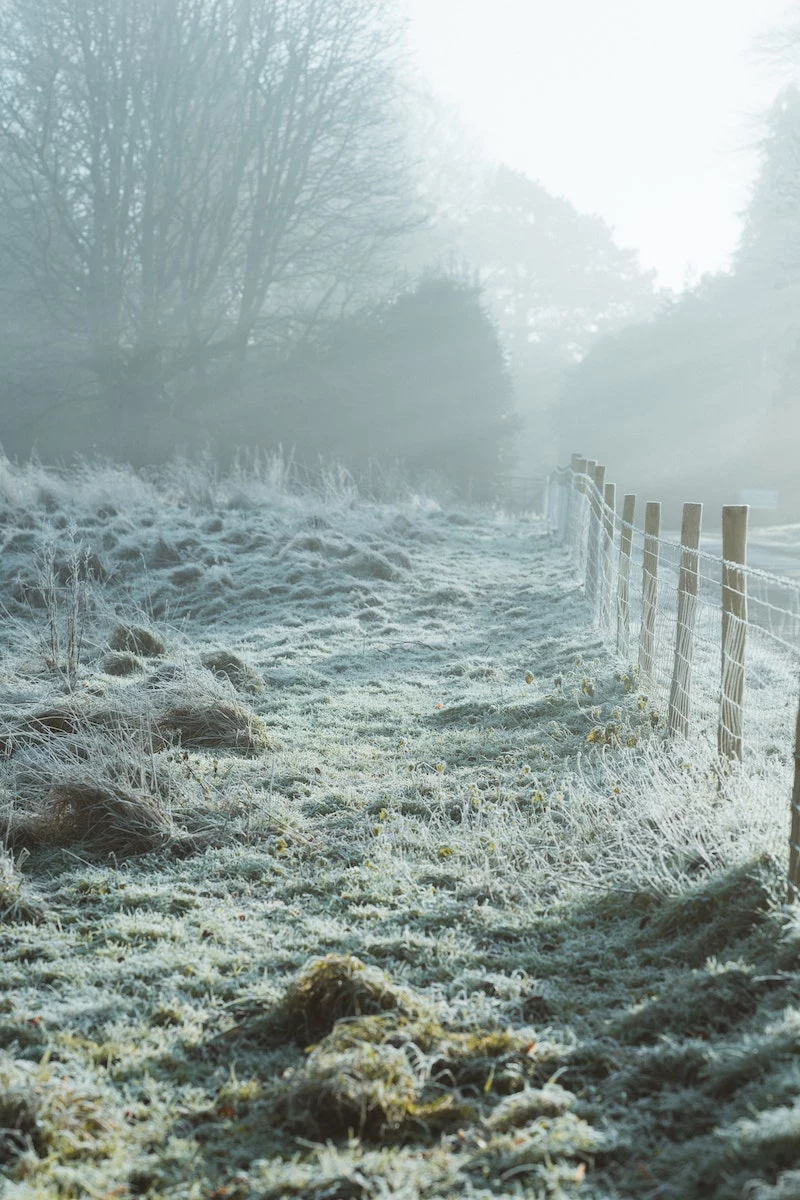
Everything we’re about to do is designed to support this natural process. It’s all about reducing stress on the visible grass blades and cramming as much energy as possible into the roots. Skipping these steps is like sending a soldier into battle without any rations.
The Final Mows: Finding the Sweet Spot
So many people get this part wrong. They either stop mowing completely in September or they scalp the lawn down to the dirt. Both are a huge mistake.
If you leave the grass too long (say, 3-4 inches), you’re rolling out the welcome mat for winter diseases. Those long blades get matted down by rain and snow, creating a damp, nasty layer right on the soil. It’s the perfect breeding ground for ugly stuff like pink or gray snow mold. Oh, and that tall grass also makes a five-star hotel for voles, which will happily chew destructive runways through your turf all winter, leaving you with a mess of dead trails in the spring.
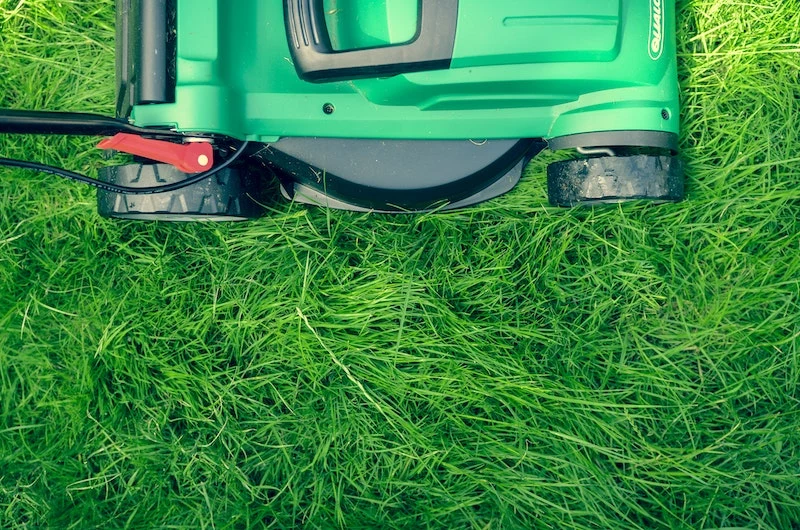
On the other hand, cutting it way too short is just as bad. Scalping the lawn down to an inch or so removes too much of the blade, which is how the plant makes food. It shocks the plant right when it needs to be storing energy and exposes the sensitive crown to harsh, drying winter winds.
The right way to do it: For your last two or three mows of the season, just lower your mower deck by one setting each time. You want the final height to be right around 2 to 2.5 inches. This is the magic number—short enough to prevent matting and discourage pests, but long enough to protect the crown. And a quick tip: Make sure your mower blade is sharp for these final cuts. A dull blade tears the grass, leaving a ragged wound that’s more open to disease. A sharp blade makes a clean cut that heals fast.

Leaf Duty: Why a Clean Lawn is a Healthy Lawn
I cannot stress this enough: do not let a thick blanket of leaves sit on your lawn all winter. It will smother your grass, block out sunlight and air, and trap moisture. That soggy, acidic mat is a recipe for disaster and a breeding ground for fungus.
You’ve got two great options here:
- Raking: The classic method. It’s a lot of work, especially if you have big trees, but it’s effective. The key is to rake regularly as the leaves fall. Don’t wait until every last leaf is down, because the bottom layer might already be a soggy, suffocating mess.
- Mulching with your mower: This is my preferred method, hands down. It saves a ton of work and actually feeds your soil. Just use a mulching mower (or a mulching blade on your regular mower) to shred the leaves into tiny, dime-sized pieces that fall down between the grass blades. These little bits will decompose over the winter, feeding earthworms and enriching your soil with organic matter. A little heads-up: this only works well with dry leaves, and you can’t let them get too thick between mowings.
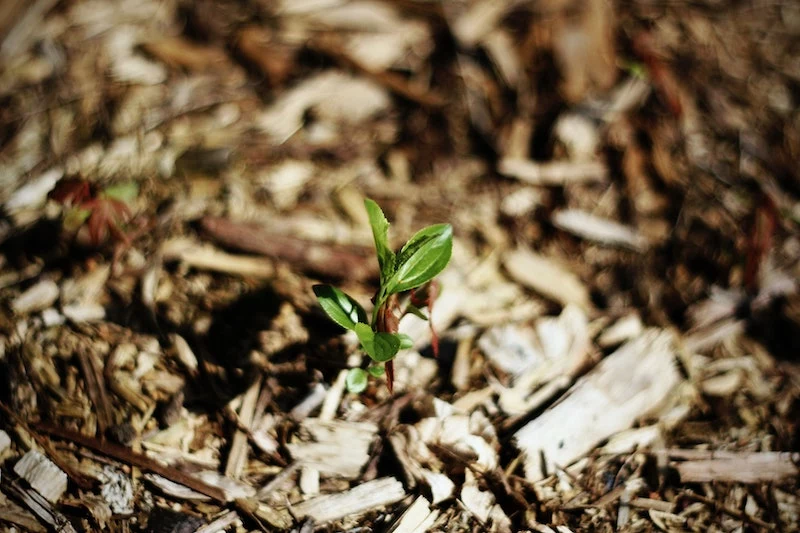
Letting it Breathe: The Truth About Aeration
If you only do one big project for your lawn this fall, make it core aeration. Foot traffic, mowing, and even heavy rain can compact your soil over time, especially if you have heavy clay. Compacted soil squeezes out all the space for air, water, and nutrients to move. Grass roots can’t push through it, leading to a shallow, weak system that suffers in both drought and cold.
The Real Deal: Core Aeration
This is the only method that truly works. A core aeration machine uses hollow tines to pull up small plugs (or “cores”) of soil from your lawn. This instantly relieves compaction and creates channels for oxygen, water, and fertilizer to get right down to the roots. You can rent a core aerator from most big-box hardware stores or equipment rental shops. Expect to pay around $50 for a 4-hour rental or up to $90 for a full day.
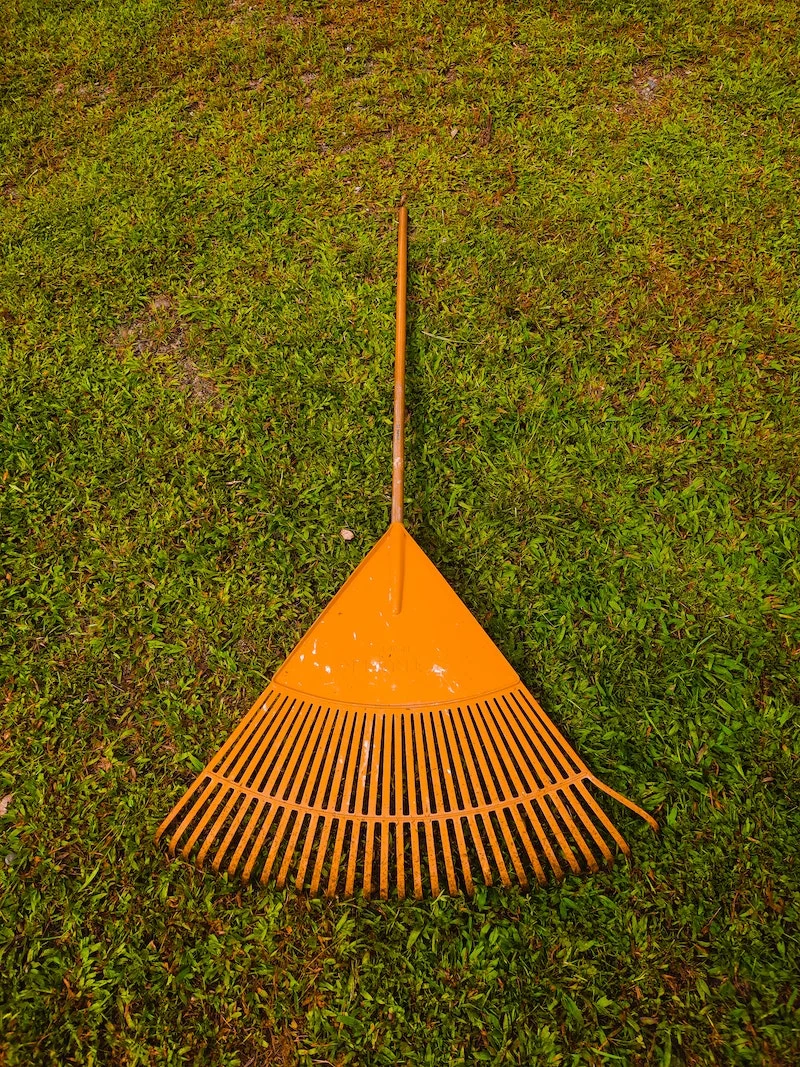
A quick tip: These machines are heavy and can be a real workout to handle, so it’s a good idea to bring a friend to help you load and unload it. For an average 5,000 sq. ft. lawn, plan on it taking about 2 hours. And don’t worry about the little soil plugs left on the lawn—just leave them. They’ll break down in a few weeks and return valuable nutrients to the soil.
What to Avoid: Spike Aerators
You’ll see cheaper options, like tools that just poke holes or even those funny-looking sandals with spikes on them. To be frank, don’t waste your money. Spiking just pokes holes and actually increases compaction around the hole, especially in clay soil. It doesn’t remove any soil, so the benefit is tiny and temporary. Stick with a true core aerator.
Heads up! Before you start, be sure to mark any sprinkler heads, shallow irrigation lines, or invisible dog fences. An aerator tine will go right through them, leading to a frustrating and expensive repair.
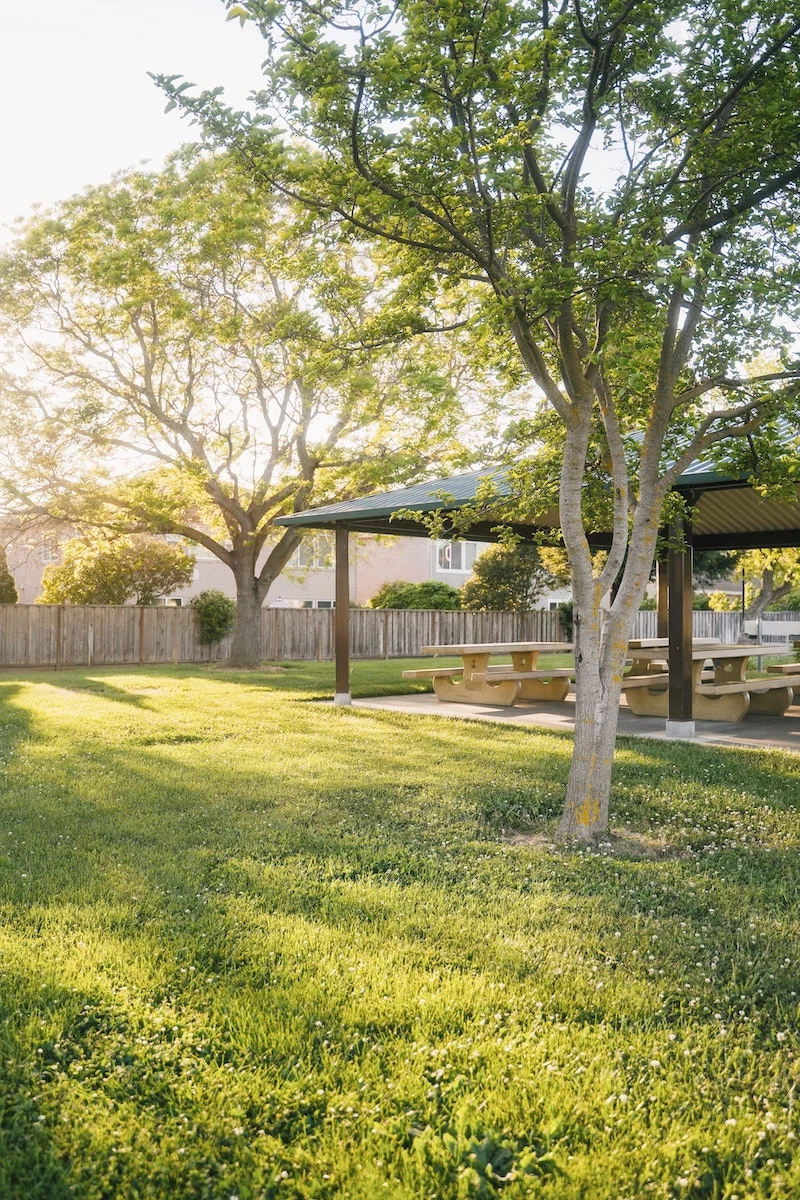
The Last Meal: Picking the Right Winter Fertilizer
Fall fertilizing is completely different than spring fertilizing. In spring, you want to push green, leafy growth. In fall, your goal is to feed the roots and build up resilience for the cold.
On any bag of fertilizer, you’ll see three numbers, the N-P-K ratio. That stands for Nitrogen (N) for green growth, Phosphorus (P) for root development, and Potassium (K) for overall plant health. For winter, Potassium (K) is the superstar. Think of it as antifreeze for your grass; it helps regulate water inside the plant and strengthens it against cold and disease.
You need to look for a specific “Winterizer” or “Fall Lawn Food” formula. These are high in potassium and lower in nitrogen. A good example would be something like Scotts Turf Builder WinterGuard or a professional blend with a ratio like 24-0-12. A high-nitrogen fertilizer now would be a disaster, causing a flush of tender new grass that will get hammered by the first frost.
Plan to spend between $25 and $40 for a quality bag, which should be enough for a typical suburban lawn. The perfect time to apply it is right after you aerate, so the nutrients can fall directly into the holes you created.
Fixing Bare Spots: The Fall Seeding Advantage
If your lawn is looking a bit thin, fall is the absolute best time to overseed. The soil is still warm from the summer, which helps seeds sprout quickly, but the cool air is much less stressful for the new grass. Plus, most of the pesky annual weeds have died off, so there’s less competition.
For the best results, you really want to time this right. Aim for at least 45 days before your area’s average first frost date. This gives the new grass enough time to get established before the ground freezes.
Good to know: This advice is for cool-season grasses like Fescue, Ryegrass, and Bluegrass. If you live in the South and have a warm-season grass like Bermuda, Zoysia, or St. Augustine, your fall routine is totally different and much simpler. That’s a whole other conversation!
Your Simple Fall Lawn Checklist
Feeling overwhelmed? Don’t be. Here it is, broken down into a simple, ordered plan:
- Clear the Debris: As leaves fall, rake them up or mulch them into the lawn with your mower. Don’t let them sit and smother the grass.
- Keep Mowing (and Go Lower): Continue to mow as needed, gradually lowering the blade height until you reach about 2-2.5 inches on your final cut.
- Aerate (If Needed): If your soil is compacted, rent a core aerator to open it up. This is the most labor-intensive step, but it pays off big time.
- Seed & Feed: This is the best time to overseed thin areas. After aerating, apply a quality winterizer fertilizer to give your lawn the nutrients it needs to store for winter.
Doing this work yourself is totally manageable, but be realistic about your time and energy. If your lawn has major issues or if the idea of wrestling with an aerator sounds like a nightmare, calling a local lawn service is a great investment. They have the professional-grade equipment and can get it done quickly.
Putting in the effort now is an investment you’ll thank yourself for later. When spring finally rolls around and your neighbors are dealing with dead patches and weeds, you’ll be enjoying a thick, green lawn that’s ready to impress.
Inspirational Gallery
Core Aeration: This method uses a machine to pull out small plugs, or “cores,” of soil and thatch from your lawn. It’s highly effective for relieving heavy soil compaction and improving water and nutrient flow to the roots.
Spike Aeration: This simply pokes holes in the ground with solid tines. While better than nothing, it can actually increase compaction around the holes in clay-heavy soils.
For the most impactful fall prep, renting a core aerator is the superior choice for long-term lawn health.
Did you know? According to turfgrass specialists at Purdue University, just a half-inch of soil compaction can reduce a lawn’s water infiltration by up to 75%.
This is why fall aeration is so critical. It physically breaks up that compacted layer, allowing water and nutrients from your fall fertilizer to reach the roots where they are needed most for winter storage.
When overseeding your lawn in the fall, don’t just grab any bag of seed. Consider creating a custom mix for your yard’s specific conditions. Combine a sun-loving Kentucky Bluegrass for the open areas with a shade-tolerant Fine Fescue blend, like the ones offered by Jonathan Green, for under trees or along the north side of your house. This targeted approach ensures a more uniform, resilient lawn come spring.
Should I stop watering my lawn as soon as it gets cold?
Absolutely not, especially if you’ve aerated or overseeded. While you can reduce the frequency, the soil needs to remain consistently moist to help new seeds germinate and to allow established roots to absorb the nutrients from your fall fertilizer. Aim for about one inch of water per week, from rainfall or your sprinkler, until the ground begins to freeze.
- A richer, deeper green color in early spring.
- Fewer patches and bare spots.
- A stronger defense against weeds and disease.
The key to these results? A proper ‘winterizer’ fertilizer. Look for a product like Scotts Turf Builder WinterGuard Fall Lawn Food, which is formulated with high levels of nitrogen and potassium to fuel root growth and improve cold hardiness.
One of the biggest mistakes homeowners make is mowing too short for the final cut of the season. Cutting the grass below 2 inches robs it of its ability to photosynthesize and store energy before going dormant. A slightly taller cut, around 2.5 to 3 inches, provides insulation for the crown of the plant and helps it survive the harshness of winter.
That thick, beautiful blanket of autumn leaves is a death sentence for the grass beneath it. It blocks sunlight, smothers the grass, and traps moisture, creating a perfect breeding ground for fungal diseases like snow mold. Don’t let them sit. Your best bet is to mulch them with your mower—the small pieces will break down and provide organic nutrients for the soil.
- Sharpen your mower blades for one last clean cut.
- Raise the deck to a height of 2.5-3 inches.
- Clear all leaves and debris *before* you mow to prevent matting.
- Give the mower a good cleaning before storing it for winter.
A single dandelion plant can produce up to 15,000 seeds, each capable of traveling several miles in the wind.
Applying a pre-emergent herbicide in late fall (while the ground is still workable) can be a game-changer. It creates a barrier that stops weed seeds—like those from dandelions and crabgrass—from germinating in the spring, giving your grass a clean head start.










